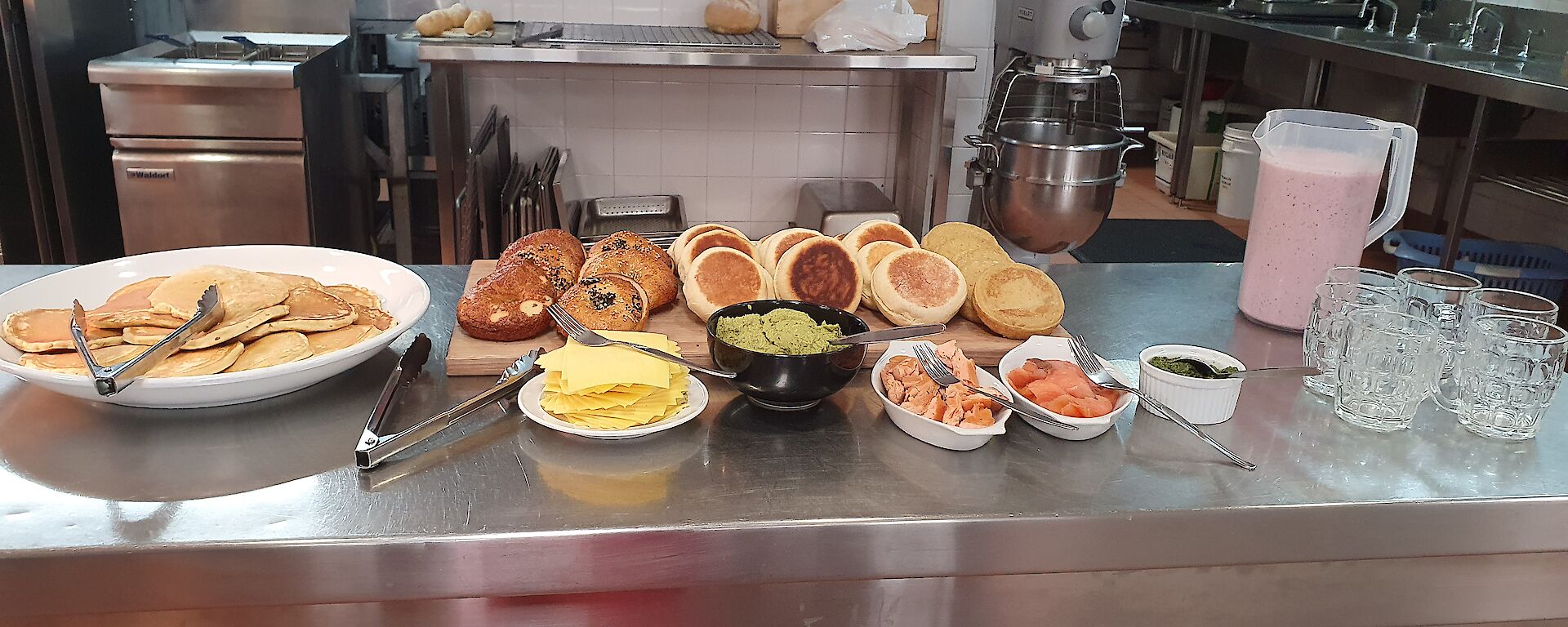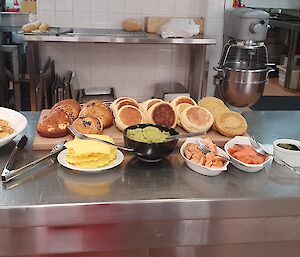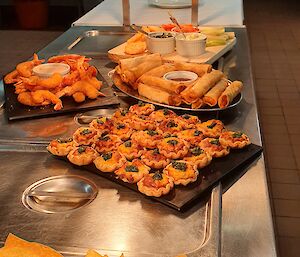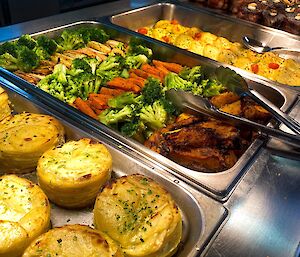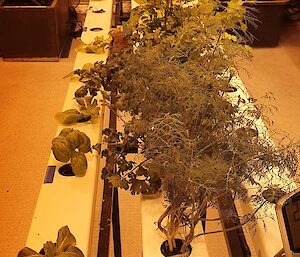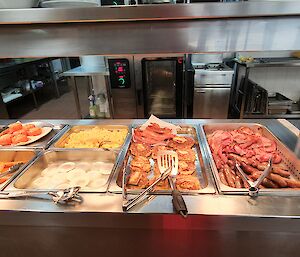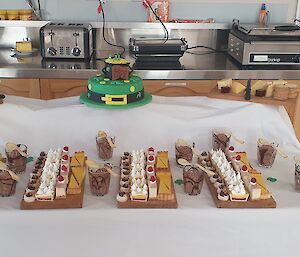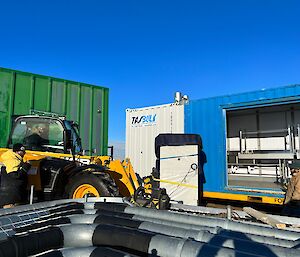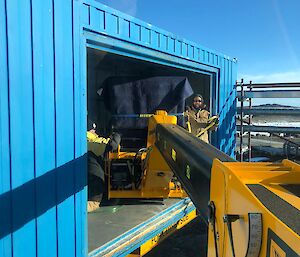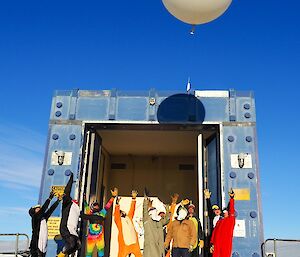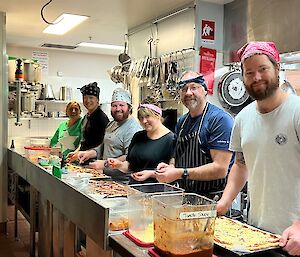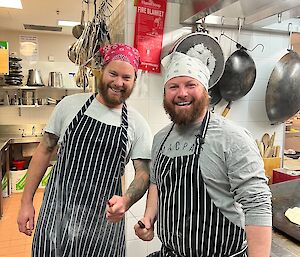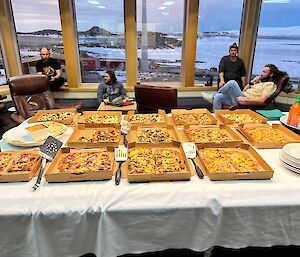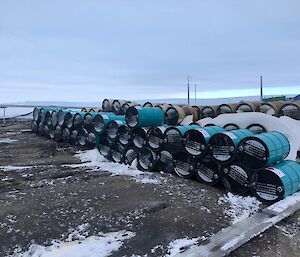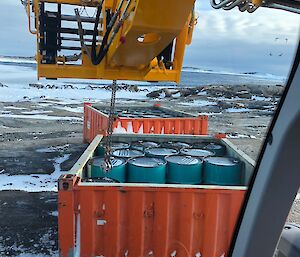A lot of family and friends have asked me several questions about my day and living at Mawson Station; I will try and answer some of those questions now.
- How many people are you cooking for?
As it is winter time there are 15 hungry people that certainly keep me busy.
- What time do you start work?
Early, as I like to make fresh bread most days e.g. sourdough, ciabatta, or plain white loaf. I put out hot porridge for those that like a hot healthy breakfast and there are plenty of berries, yoghurt, stewed rhubarb, chia seeds, granola and always plenty of bread for toast or cereal to choose from. I break around lunch time which is when I go to the gym for a run and have a very relaxing sauna. After that it's back at work to cook dinner, finishing around 6pm.
- How many meals do you cook a day?
Three meals a day. Smoko 10am (morning tea), lunch 12.30pm, and dinner 6pm.
The biggest and most talked about meal is smoko. So, I always have a soup ready, freshly baked rolls and then it’s something savoury, meaty, cheesy or pastry and you can’t go wrong. For example; bacon & egg roll, hot roast and gravy roll, ham and cheese scrolls, meaty pies, sausage rolls, pizza etc..
Lunch is usually cold cuts of meat, fresh made salads and sandwich fillings. So lunch is a lighter meal and a healthy one as I also make sushi, Vietnamese rolls, and wraps for more variety.
Dinner time there is a choice of two types of protein, vegetables, vegetarian dish, starch (potato, rice or pasta) and gravy.
Dessert there is all you can eat ice-cream. I do make a hot dessert on Roast Nights which is Mondays. We also celebrate people’s birthdays so, if they choose, there will be a birthday cake too.
- Do you work weekends?
Short answer is that I have Sunday off and half day on Saturday. Saturday mornings I supply a wonderful cooked brunch with all the trimming, fresh bagels, English muffins, pancakes, smoothies and the usual items baked beans, spaghetti, garlic mushrooms, hash browns, vegetable fritters etc.. Brunch is one of the most favourite meals of the week and a close second is Roast Night followed by Casual Fridays.
- How do you keep it interesting?
There is always plenty of suggestion from everyone to keep me busy and I'm always looking for new ideas. We have a social calendar that has theme dinners, social celebration, public holidays and birthdays. So far I have done St Patrick’s Day dinner, pop-up burger bar, cookery class all about bread and we have formal nights when we can dress up and I get to use good cuts of meat e.g. lamb rack, duck, salmon or eye fillet which is a fun night with a lot of laugher.
- Do you get tired of cooking?
No. I’m lucky I do love my job. I have always been a chef and I am still learning so many new tricks and different dishes. I have a fantastic team of people to cook for and they eat EVERYTHING which makes my job so much more interesting. Yes, I know exactly all their food habits from breakfast to dinner and the late night munchie. I do try and give them as much healthy variety and comfort food as possible just like home.
- Do you have hydroponics?
Yes we do. We are at our early stage for grown lettuces, tomatoes, cucumbers, chillies, herbs, capsicums all planted but now will take time and some TLC (tender loving care). We are getting some lettuces and herbs already but not in great amounts.
- Do you get stuck for ideas?
I have brought about three boxes on my own cookery books to get some inspiration if needed. Otherwise Google is your friend for so many ideas, plus AAD subscribe to a food magazine downloaded to iPad. But the biggest ideas I get are from 14 other people that have heaps of ideas and their favourite meals. Friday nights are a casual dinner meal in the bar/lounge and this might be burgers, fish’n’chips, burritos, KFC burger, chicken parmigiana, spaghetti bolognaise, ramen etc.
- Is there anything you miss in the way of food?
Would love some grapes, fresh field mushrooms, broccolini, eggplant, snow peas, fresh spinach, avocados and the list will keep growing.
- What fresh food do you still have?
The only fresh items are eggs, apples, red and green cabbage, onions, potatoes, oranges, pears, lemons and pumpkin. It’s a little race at the moment when you first come to station and you have all this fresh food you have to process the items before they deteriorate. For example, potatoes get peeled, steamed to ¼ cooked, cooled and then bagged and placed in the freezer. I do this for most fresh food items, citrus is juiced and frozen, and cabbages hold really well so it’s a matter of just taking the outer leaves off if deteriorating.
Well, I hope this has answered some of those food questions that people have been asking.
Chef Donna

